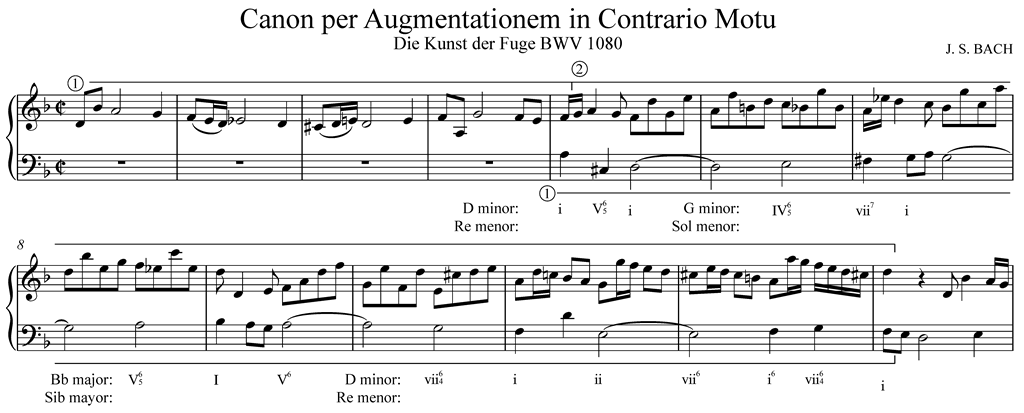Canon per Augmentationem in Contrario Motu
José Rodríguez Alvira
In this canon the imitation is transformed by augmentation and inversion or contrary motion.
Augmentation is technique whereby note values are proportionally increased in duration:
 |
 |
 |
 |
| Half notes become whole notes | Quarter notes become half notes | Eighth notes become quarter notes | Sixteenth notes become eighth notes |
Inversion or contrary motion is a counterpoint technique in which the interval direction is changed. Each ascending interval becomes a descending interval and vice versa.
The upper voice presents the subject of the canon (measures 1 - 5):

The lower voice transforms the subject using augmentation and inversion (measures 5 to 13):

The lower voice - due to augmentation - needs 8 measures to answer the first 4 measures. We have identified each melodic idea presented by the upper voice. Between bars 5 and 13, Bach visits the D minor, G minor and B flat major keys. Here are measures 1 to 12:

This canon has two sections. In the first section (bars 1 to 52) the lower voice imitates the upper voice. On measure 53 the second section begins. This section is equal to the first 52 bars but with the voices inverted, that is, the voices exchange the melodic material. Now the upper voice is going to imitate the lower voice.
In bars 105 to 109 the top voice presents the subject for the last time and the canon concludes.
This image show the canon's structure:

The complete canon:
Recording courtesy of Internet Memory Foundation and Musopen